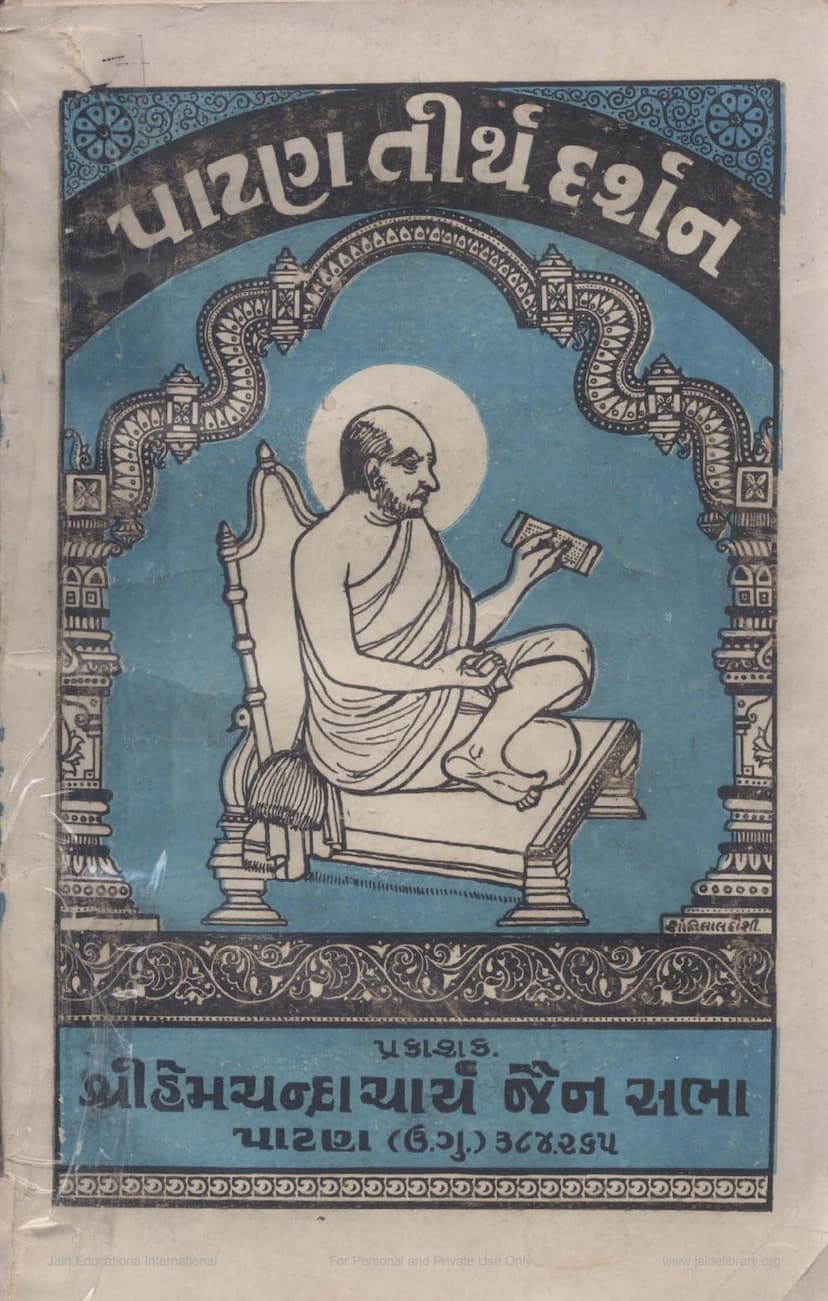Patan Tirth Darshan
Added to library: September 2, 2025

Summary
Here's a comprehensive summary of the Jain text "Patan Tirth Darshan":
Overview:
"Patan Tirth Darshan" is a guidebook published by the Shri Hemchandracharya Jain Sabha in Patan, Gujarat. It serves as a spiritual and historical guide for pilgrims visiting Patan and other Jain pilgrimage sites in North Gujarat. The book aims to provide essential information about the temples, their history, significance, and the cultural heritage associated with these sacred places.
Key Themes and Content:
-
Patan as a Sacred City: The book emphasizes Patan's historical importance as a former capital of Gujarat and its deep-rooted connection with Jainism. It highlights how the city's architecture and culture reflect a strong Jain influence, with numerous temples and a rich spiritual legacy.
-
Historical Significance of Patan:
- Founding: Patan, originally known as Anhilpur Patan, was founded by King Vanraj Chavda of the Chavda dynasty. The city's foundation and development were influenced by Jain principles.
- Jainism's Flourishing: During the reign of various dynasties, Patan became a significant center for Jainism. Many rulers and their subjects were devoted to Jainism, leading to the construction of numerous temples and the establishment of Jain learning centers.
- Cultural Hub: Patan was not just a political capital but also a vibrant cultural and educational hub, particularly for Jain scholars like Acharya Hemchandracharya, who contributed immensely to Jain literature and philosophy.
- Decline and Revival: The book mentions the decline of Patan in the 14th century but also highlights efforts to preserve and revive its Jain heritage.
-
Prominent Jain Temples and Sites:
- Shri Panchasar Parshvanath Temple: This is a major highlight, described as a masterpiece of Jain art and architecture. The book details its history, including its founding by King Vanraj, its destruction and subsequent reconstruction, and the grand installation ceremonies.
- Other Temples in Patan: The book lists and describes various other temples located in different parts of Patan, such as:
- Shri Jogiwada Shamal Parshvanathji Temple
- Shri Bhiladiya Parshvanathji Temple
- Shri Ashtapadji Temple
- Shri Kotawala Dharmashala Temple
- Shri Dhandherwada Temple
- Shri Maniati Pada Temples
- Shri Kumbhariya Pada Temple
- Shri Shamalji Temple (Jogiwada)
- Temples associated with various "Padas" (localities) and communities.
- "Sahasrakoot" (Thousand Peaks): The concept of Sahasrakoot, which involves the installation of 1024 Jin images, is explained, and two such sites in Patan are mentioned.
-
Detailed Information about Temples: For each temple, the book often includes:
- The main deity (Mulnayak).
- The locality (Mohalla/Pada).
- The architectural style and specific features.
- Historical anecdotes, legends, and details of renovations or installations.
- Information about the idols, their craftsmanship, and any unique attributes.
-
Pilgrimage and Devotion: The book emphasizes the spiritual benefits of visiting these tirthas, aiming to inspire self-purification, peace, and spiritual well-being in pilgrims. It mentions traditional practices, like the "Panchtirthi" Yatra and specific days for temple visits.
-
Educational and Social Institutions: The book also briefly touches upon the educational and social institutions in Patan, such as:
- Shri Hemchandracharya Jain Gyan Mandir (a library and knowledge center).
- Shri Patan Jain Mandal Chhatralaya (hostel).
- Balashram (children's home).
- Various schools and colleges.
- Shri Bharatiya Arogya Nidhi (healthcare initiatives).
- Dharmashalas (rest houses for pilgrims).
-
Other Jain Tirthas in North Gujarat: Beyond Patan, the book provides descriptions and historical accounts of other significant Jain pilgrimage sites in North Gujarat, including:
- Charup Tirth: Known for its ancient Parshvanath statue and historical significance related to Acharya Shilgun Suri and King Vanraj.
- Metrana Tirth: Mentioned for its ancient Jain temple and a legend involving a devotee's dream.
- Bhiladiya Tirth: Described as a prominent tirth, highlighting its temple, idols, and the devotional practices.
- Kamboi Tirth: Known for its Manmohan Parshvanath temple and ancient origins.
- Taranga Tirth: A significant hill shrine with multiple temples and a history linked to King Kumarpal and Jain scholars.
- Simandhar Swami Temple (Mehsana): A modern but impressive temple dedicated to Lord Simandhar Swami, who is believed to be still living in Mahavideh Kshetra.
- Shankheshwar Tirth: A highly revered tirth with a rich history of renovations and legends, especially concerning Lord Parshvanath.
- Valam Tirth: Known for its ancient Nemnath statue.
- Chanasma Tirth: Features the Bhatewa Parshvanath idol.
- Gambhu Tirth: An ancient site with historical connections to Jain scholars and kings.
- Other smaller tirthas like Bhoyani, Pansar, Serisa, Vamaj, and Mahudi are also briefly mentioned.
-
Acknowledgments and Donations: The book includes acknowledgments to donors and patrons who contributed to its publication and the upkeep of the temples. It also features photographs of the founding members and patrons.
Purpose and Target Audience:
The primary audience for this book is Jain pilgrims and devotees who intend to visit Patan and other Jain holy sites in North Gujarat. It also serves as a valuable resource for those interested in Jain history, art, architecture, and culture. The book aims to guide pilgrims, provide them with necessary information, and deepen their spiritual connection to these sacred places.
Overall Tone:
The book is written with a devotional and informative tone. It aims to glorify the Jain heritage of Patan and North Gujarat, inspire faith, and preserve the rich legacy of these sacred sites for future generations.